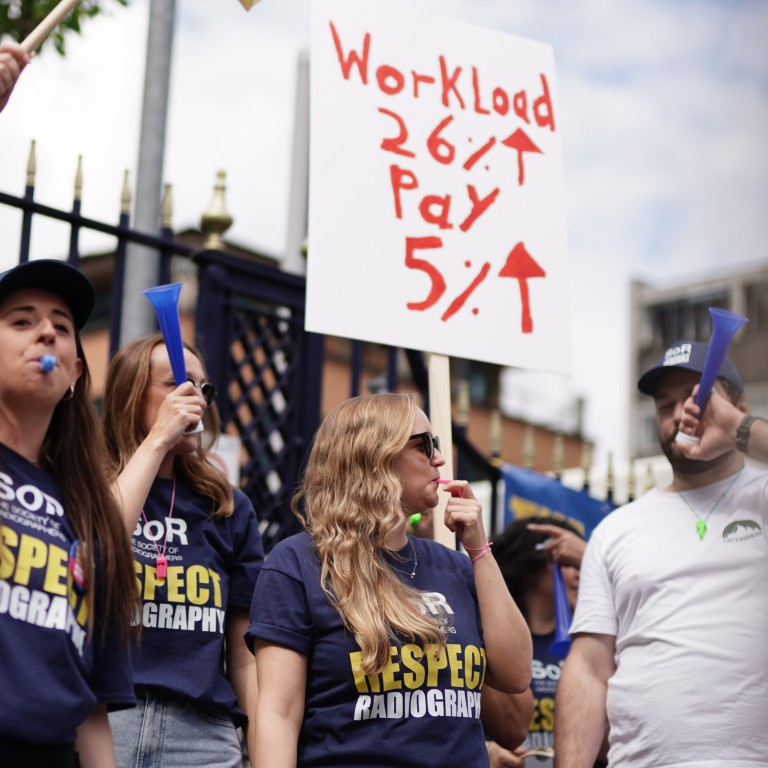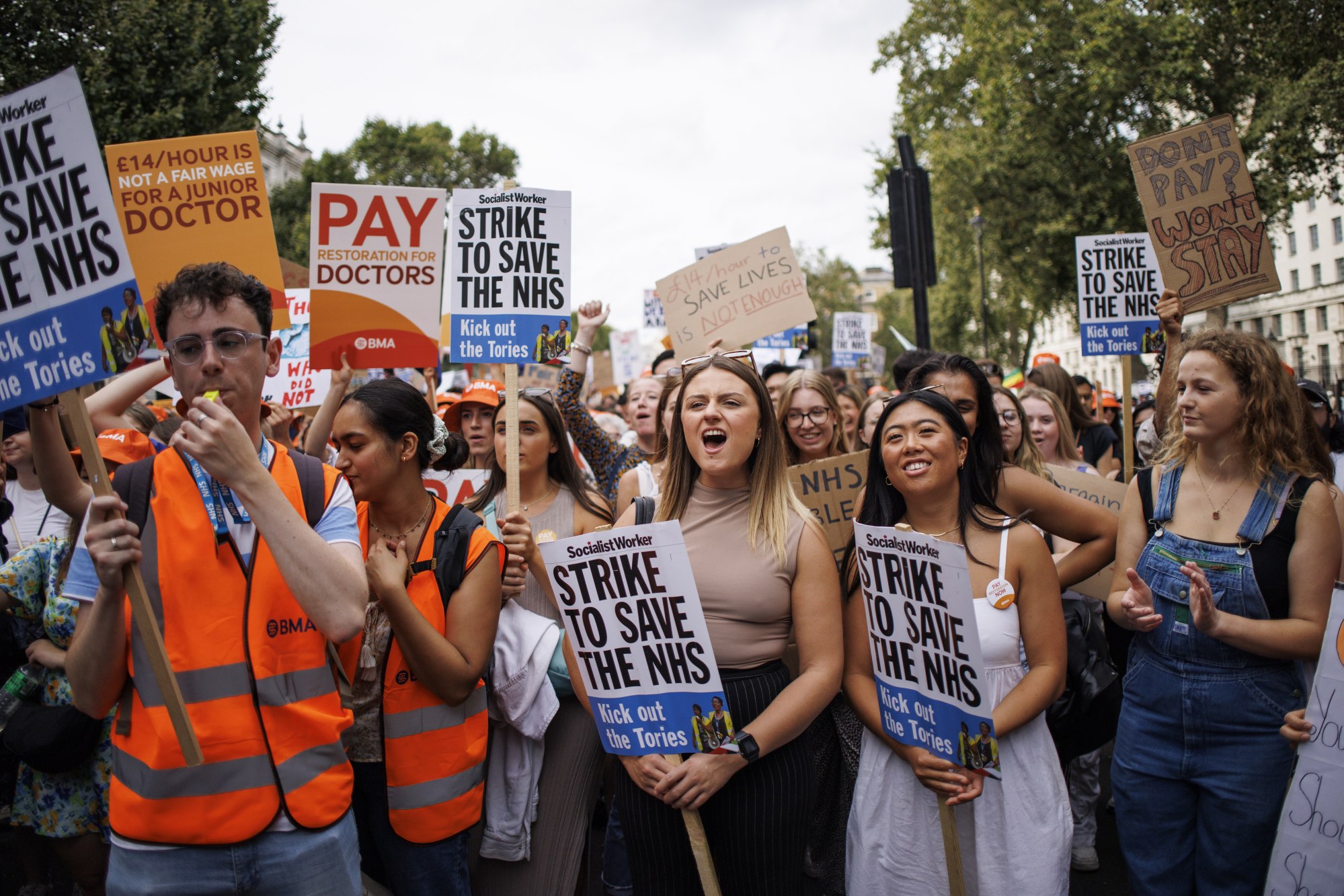
Britain lost nearly 4 million days to strikes over the past year – most since the 1980s: study
- Many strikes have been fuelled by real-terms falls in pay of more than 9 per cent in the highly unionised public sector. But it’s not all about pay
- Working conditions, exhaustion and stress are also front of mind for the doctors, teachers, postal workers and others on the picket lines
Many of the strikes have been fuelled by real-terms falls in pay of more than 9 per cent in the highly unionised public sector, said the Resolution Foundation.
Sectors including health, education, the postal services and railways have been responsible for 96 per cent of all days lost to strike action since 2021, said the think tank.

But real-terms pay for public sector workers fell by 9.2 per cent over the same period and for those in health and social care it fell by 9.8 per cent, the study indicated.
The foundation said the strikes were not just about pay, warning that working conditions, exhaustion and stress also played an important part.
UK government refuses to give way on pay as health worker strikes continue
The public-sector pay squeeze also appears to have contributed to an increase in vacancies, with those in health, education and public administration 33 per cent higher in March than in December 2019, compared with 23 per cent higher across the rest of the economy, the report said.
“The recent strikes from teachers and junior doctors reflect the fact that real-terms public sector pay has fallen severely in the past few years, as well as the stress and difficult workplace conditions frequently reported by workers in these sectors,” said Nye Cominetti, senior economist at the Resolution Foundation.
“However, the inflation-driven pay squeeze should also be understood as part of a broader pattern of poor pay growth across both the public and private sectors, and falling pay satisfaction among public sector workers.”
Thousands of hospital doctors walk out in latest UK strike
“Going forwards, the government will need to balance fiscal caution with the need to provide a level of pay for public sector workers that reflects the very real difficulties faced by workers in these sectors, and ensures that vacancies in these sectors continue to be filled,” he said.
“In addition, there should also be a renewed focus on improving pay and working conditions for workers in essential sectors like social care, that are largely not unionised, but which are still experiencing the effects of job stresses and pay squeezes.”

